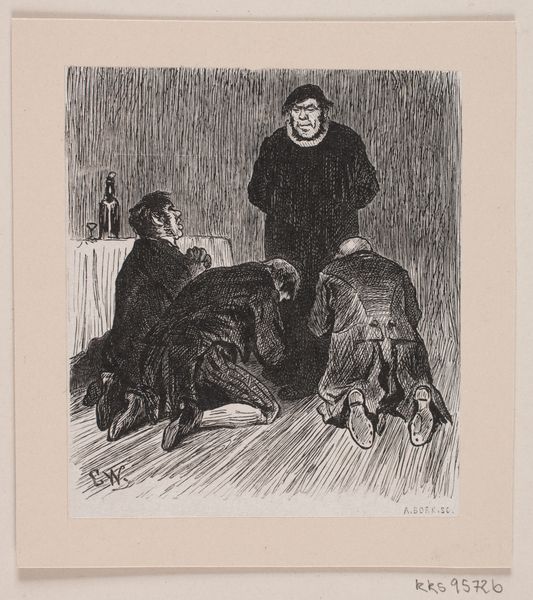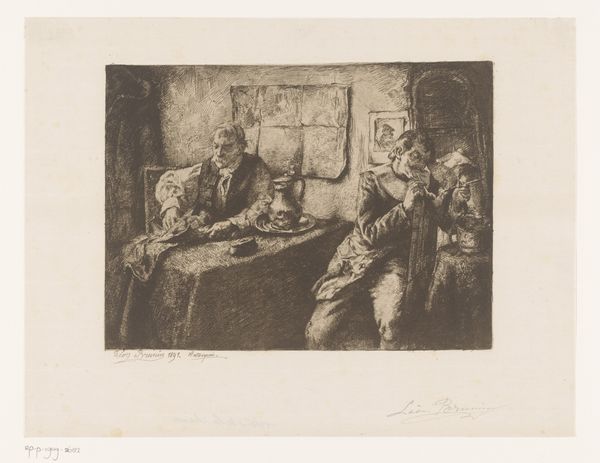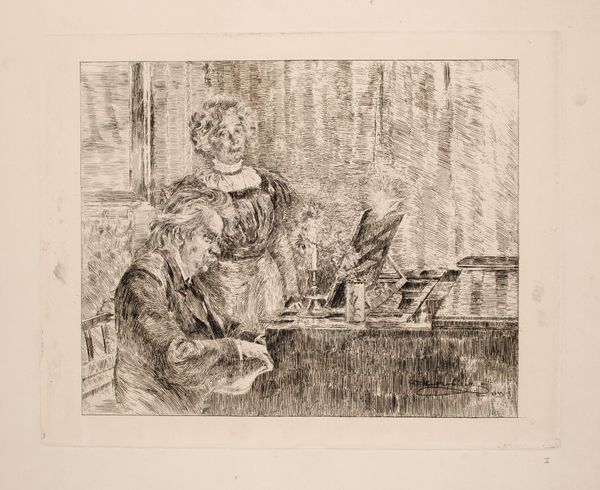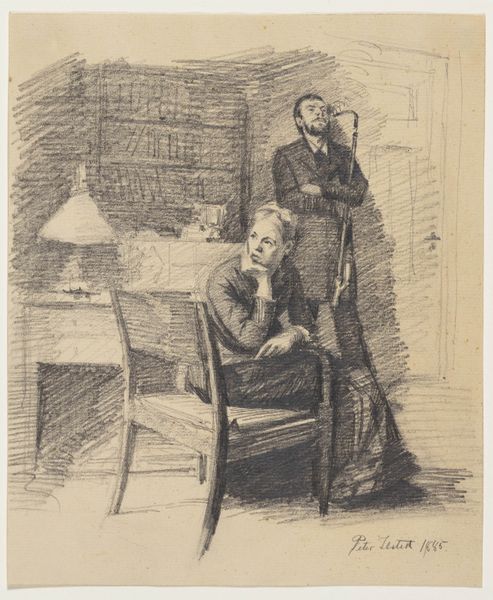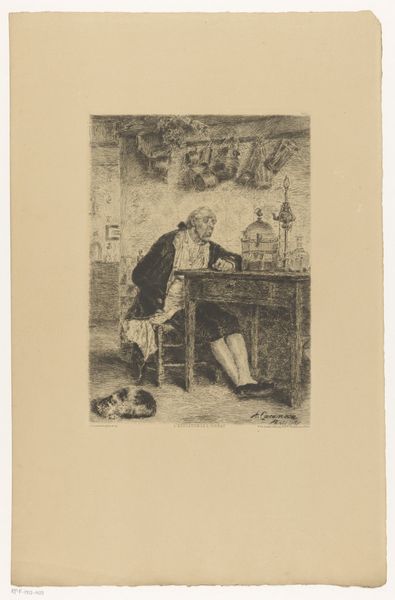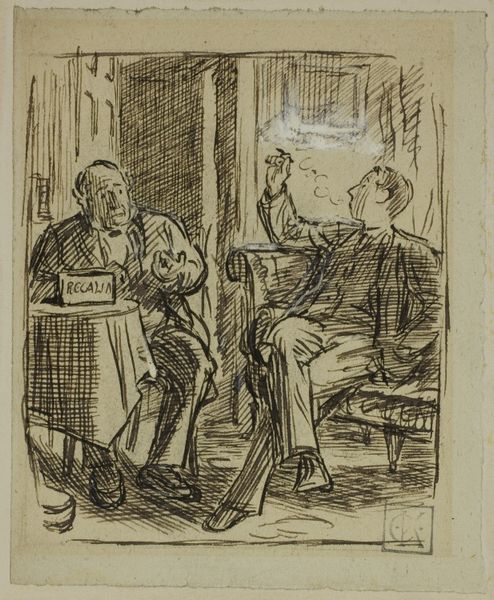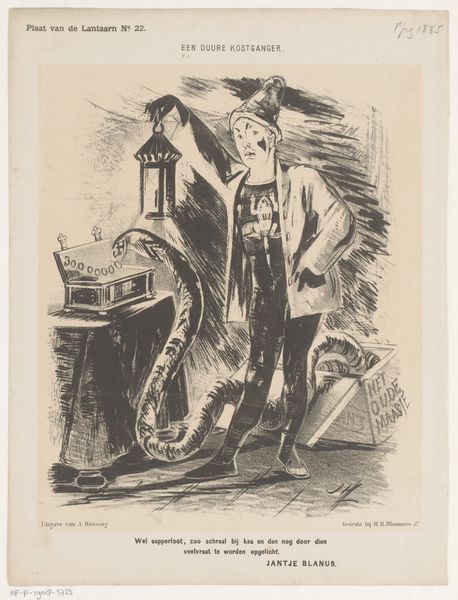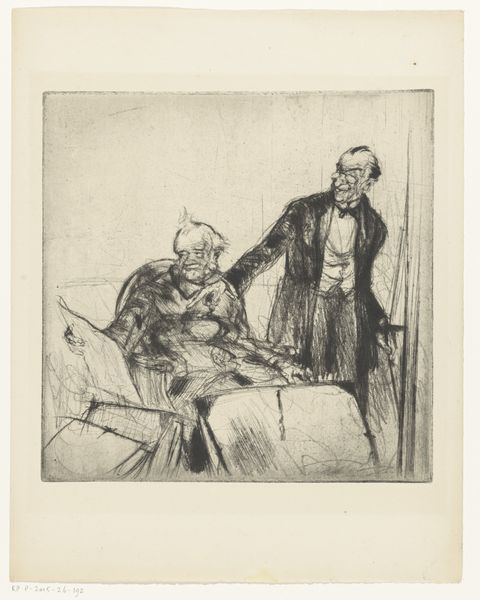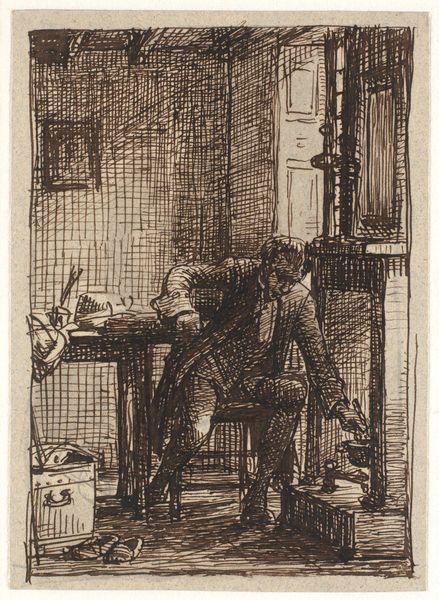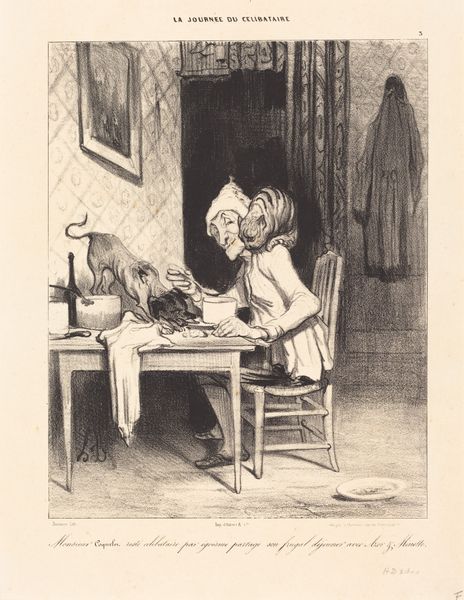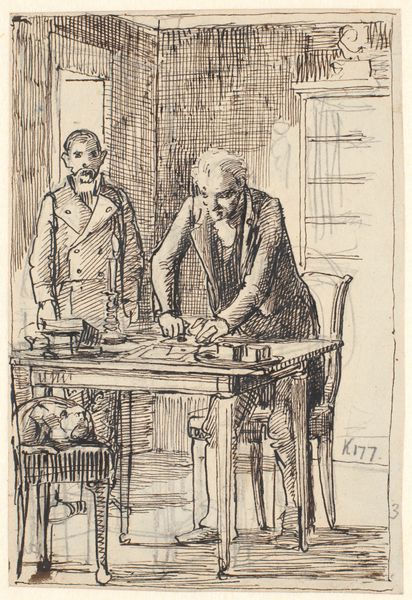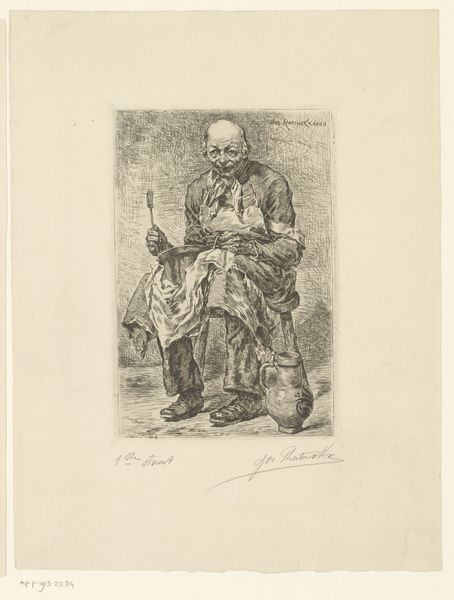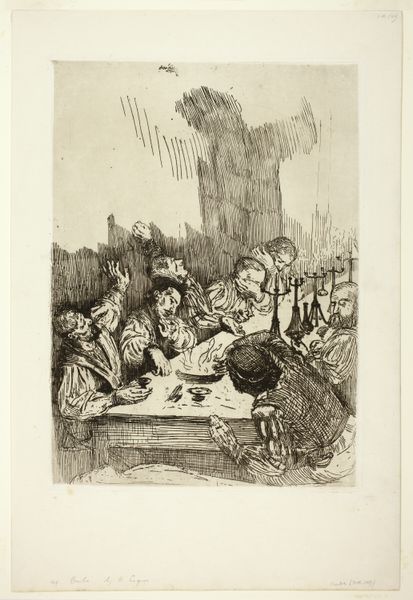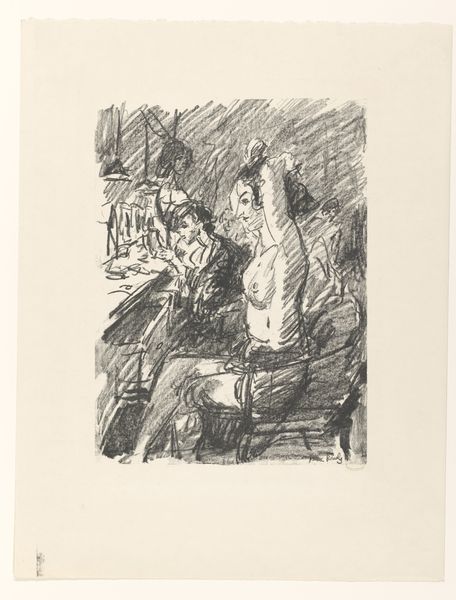
drawing, print, etching, ink, engraving
#
portrait
#
drawing
#
narrative-art
# print
#
etching
#
caricature
#
figuration
#
ink
#
line
#
genre-painting
#
engraving
Dimensions: 138 mm (height) x 121 mm (width) (bladmaal)
Editor: This is "Illustration til 'Kulbrænderen'" by André Bork, made sometime between 1854 and 1932. It’s an etching in ink. It seems like a scene from a play or a book, really theatrical. I'm struck by the almost frantic energy of the figure carrying the tray. What do you make of it? Curator: Well, focusing on the material production, consider that this print likely served a specific function in disseminating the narrative. The use of etching and ink, relatively inexpensive and reproducible mediums, points towards a desire to reach a wider audience than, say, an oil painting could. Do you see how the stark black and white contrast affects the reading of social dynamics in the image? Editor: Absolutely. The clear distinction makes the labour relationship stark – the servant practically sweating under the burden, compared to the seated figure. So, the medium itself reinforces the message? Curator: Precisely. Think about the cultural context: the rise of print media democratizing art, but also solidifying class divisions. This etching could be seen as both reflecting and participating in that social landscape. The lines almost vibrate with a kind of frantic, agitated energy, amplified by the reproductive means that disseminated it. Does the idea of wider distribution now influence your reading of the work's caricature style? Editor: It does! It's like the artist is exaggerating these figures and their roles, almost mocking them for a mass audience. So the cheap print facilitates accessibility *and* allows for social commentary, targeting perhaps the very audience consuming it. I wouldn't have picked that up on my own! Curator: Exactly. By examining the means of production and its cultural implications, we unlock layers of meaning within the image, going beyond a simple narrative interpretation. Editor: I’ll definitely look at prints differently now, considering their function and reach. Curator: Indeed! Now we see this etching not just as an image, but as a document embedded in its time, shaped by material forces and social dynamics.
Comments
No comments
Be the first to comment and join the conversation on the ultimate creative platform.
